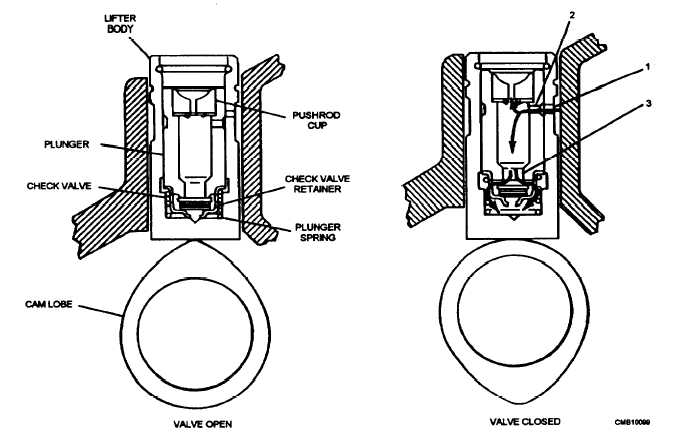
Figure 3-48. - Hydraulic tappets.
mushroom tappets. Another variation is the roller tappet. It has a roller contacting the camshaft and is used mostly in heavy-duty applications.
HYDRAULIC tappets are very popular in overhead valve engines. They use oil under pressure to maintain zero clearance in the valve mechanism automatically. The lifter body, which contacts the camshaft lobe, is hollow. Inside the lifter body, there is a plunger that operates the valve mechanism. Injecting oil into the cavity under the plunger regulates its height, thereby adjusting valve mechanism clearance. The hydraulic lifter operates as follows (fig. 3-48): oil, supplied by the engine lubrication system, reaches the lifter body and enters it through passage (1). The oil then passes through passage (2) to fill the plunger. The oil then passes through passage (3) where it pushes the check valve off its seat to enter the cavity under the plunger. As oil fills the cavity, it pushes the plunger up to where it contacts the valve mechanism. When the camshaft pushes the lifter body up, the oil is trapped in the cavity and cannot escape because the check ball seals the opening. This trapped oil then becomes a solid link between the lifter body and the plunger. The constant pressurized supply of oil will maintain zero clearance in the valve mechanism.
The face of the tappet and the lobe of the camshaft are designed so the tappet rotates during operation (fig. 3-49). The cam lobe is machined with a slight taper that

Figure 3-49. - Tappet-to-can lobe relationship.
Continue Reading
